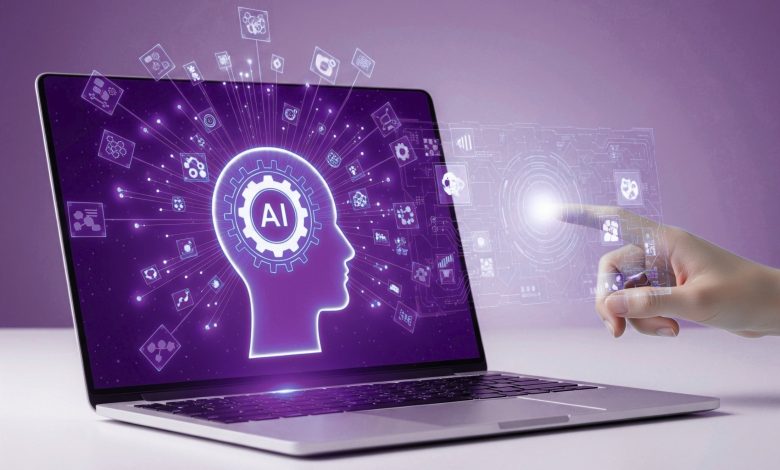
Conversations around AI in the workforce have become polarized. On one end, you have people celebrating automation as a remedy for inefficiency; on the other, you have people expressing their fears of mass unemployment, with AI potentially diminishing human value.
Unfortunately, both miss the point.
Here’s the bitter truth: AI is a powerful enabler, never a replacement. Companies must resist automation simply for the sake of doing so. Instead, they should focus on augmentation. Use AI to empower people, not displace them. Redirect the tools’ effort into supporting people, not replacing them. Otherwise, they risk losing their very soul: their human value.
False Promise of Total Automation
Let’s be clear. This article isn’t meant to reduce the value of automation. It has its place in processes that no human should waste their time and abilities on.
But here’s the uncomfortable truth: too many businesses see automation as their silver bullet that will magically solve their problems and settle disputes in their operations.
Companies dream of eliminating departments and replacing them with AI for faster, cheaper, and error-free processes, without considering they’re also replacing human judgment and nuance. That’s a fantasy, a very dangerous one.
Customers don’t stay loyal to brands solely because of faster ticket resolution. They stay because of experiences shared by empathy and creativity; things that overreliance on automation strips away.
Companies may breathe a sigh of relief due to automation, but this has the potential to turn them into faceless entities, and in the long run, that’s poor business management.
Augmentation is the Smarter Path Forward
Total automation can lead to replacement, but augmentation is about amplification.
Imagine people handling complex issues, and instead of scrambling through massive knowledge bases and multiple possible scenarios and resolutions, they have AI to assist them with real-time analysis and recommendations.
People still lead the workforce, but now with sharper insights and greater confidence. That’s not only efficiency. That’s empowerment.
AI should be the co-pilot, not the pilot.
It should strip away the menial work, not to replace humans, but to allow them to focus on what they do best: solving problems, building relationships, and innovating.
Humans shouldn’t be replaced with machine wholesale. Yes, they can step in to handle the tedious and transactional tasks. But when it comes to customer-facing roles, critical decisions, or relationship-driven work, humans must remain in the lead.
Companies have a responsibility not only to their clients but also to their workforce.
Employment depends on their decisions. Easily reducing people to budget alternatives to be swapped for bots is simply shortsighted and irresponsible. The solution isn’t replacing people, but redesigning roles. This isn’t a charity decision. It’s good business.
When Automation Fails and Augmentation Wins
The difference isn’t just theory. Real cases have already reflected the stark difference between blind automation and thoughtful augmentation.
In fact, telcos have already learned this the hard way. Multiple studies, such as those from Customer Experience Magazine and CustomerZone360, have reported customer disappointments regarding chatbots’ inability to respond appropriately. Their frustrations stem from AI falling short in handling complex and nuanced interactions.
McDonald’s has also tested its AI-driven voice ordering system to automate its drive-thrus. However, early pilots had error rates near 20%, and what happened? Humans had to intervene to help ease customers’ frustrations.
Where does augmentation deliver?
A perfect example of this system’s success is reflected in companies that utilize Google Cloud’s Contact Center AI, which assists agents with real-time sentiment analysis. The results showed that calls were resolved faster, agents felt less stressed, and customers left more satisfied.
Throughout these examples, the lesson is consistent: When AI replaces people, it often and very easily backfires. When it empowers people, it creates lasting value.
Outsourcing as the Forefront of This Shift
The outsourcing industry is uniquely positioned to set the tone for how AI can reshape the global workforce. Unlike other sectors, outsourcing operates at the intersection of people, technology, and processes, delivering critical services across industries.
Should outsourcing companies opt for total automation without appropriate limits, they risk undermining their own value proposition. Clients can receive poorer outcomes for lower costs. However, should they choose augmentation, they elevate the industry.
Outsourcing moves from being the cost arbitrage choice to a strategic innovation decision. This shift separates the winners from the runners.
AI handles the mundane, but humans remain in charge of the meaningful. RPA, chatbots, and machine learning will handle repetitive, rule-based tasks, while humans will manage complex interactions, creative and critical problem-solving, and emotional intelligence.
With this, workforce roles evolve, not disappear. Instead of contracts being terminated, employees can transition and be trained into higher-value functions supported by AI.
This isn’t science fiction or idealism. It’s the logical next step to integrate AI into the workforce by choosing augmentation, not blind automation, as the guiding principle.
AI Isn’t the Workforce’s Enemy
It’s not something people should fear or be intimidated by while working. The real enemy is the decisions companies make in deploying it.
Automation reduces costs, but augmentation creates long-term value and sustainability. Companies that rely on automation will only alienate customers, disempower employees, and hollow out their company’s value and competitiveness.
It’s never humans vs. AI. It’s automation vs. augmentation, and the future of the workforce should be headed in a direction where AI empowers people, not erases them. This isn’t only forward-thinking. It’s sustainable.




